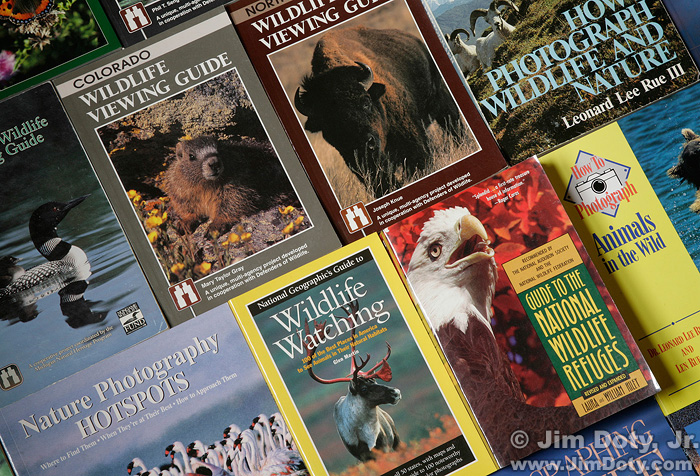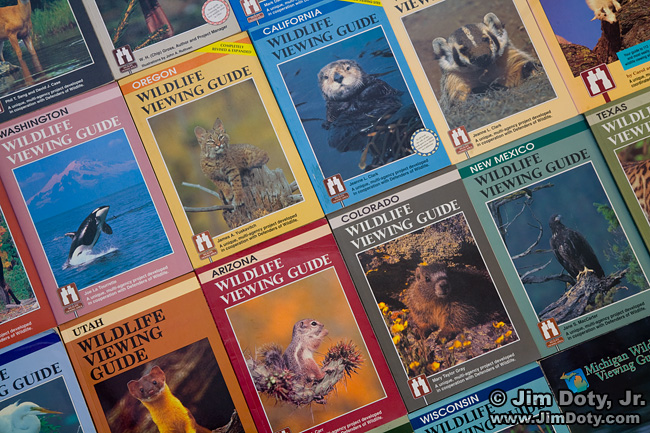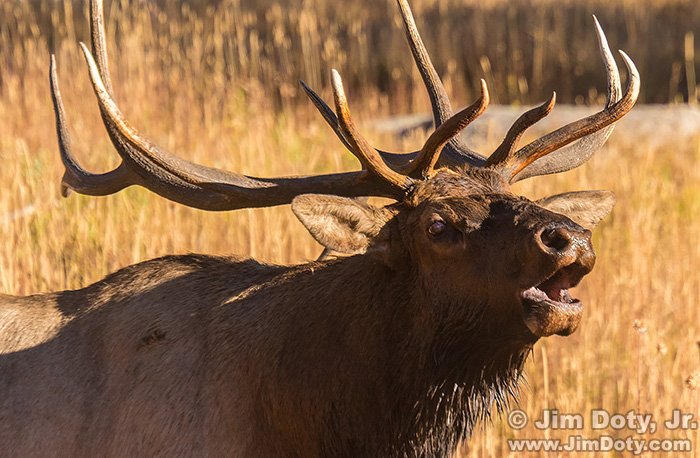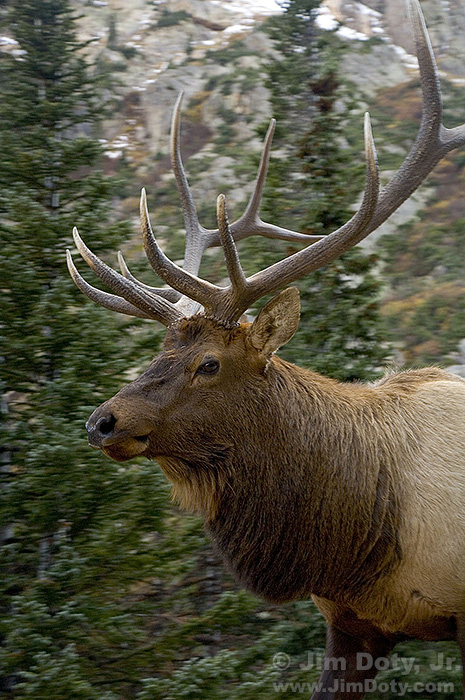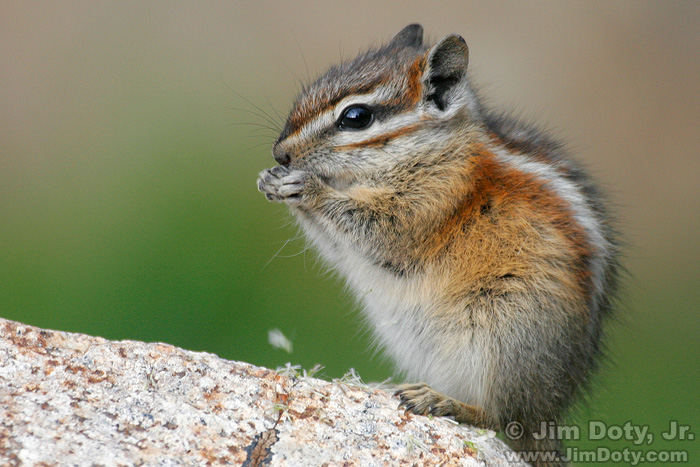The first step to photographing wildlife is finding wildlife and one of the best ways to find wildlife is to look at wildlife location books. They will save you hours of frustration by sending you to the best locations to find wildlife.
Finding wildlife doesn’t mean you will get eye catching images. Some of the very best wildlife photographers have put their professional secrets into some excellent books. Part two in this series is How To Photograph Wildlife, The Best Books (link below). Be sure and read that article after you read this one.
In the case of common wildlife, you don’t need a guidebook. If you are looking for squirrels you may not need to look any farther than your own back yard or the local park. But if you want to photograph something a little more exotic like Chachalacas or Green Jays, you need to know where to look for them (the southern tip of Texas).
Most of the best wildlife location guides are out of print but you can still find them via my Amazon powered photography store. More information follows later in this article.
Three of my favorite wildlife location guides are the Guide to the National Wildlife Refuges by Laura and William Riley, National Geographic’s Guide to Wildlife Watching by Glen Martin, and Nature Photography Hotspots by Tim Fitzharris. All three guides cover the whole United States. The Rileys’ book is very detailed and covers a huge number of locations, but not the national parks. The books by Martin and Fitzharris are more selective and cover a shorter list of prime locations, including some of the best national parks to photograph wildlife.
For more detailed location guides on a state by state basis, a great set of books is the Watchable Wildlife series (look for the binoculars on the cover). Most of the books in the series were published by Falcon Press. The Watchable Wildlife series was a nationwide project and involved a wide variety of U.S. and state government agencies. A lot of work went into the series and it shows in the quality of the information in the books. Each book provides information and maps for the best wildlife viewing sites in the state.
Unfortunately the Watchable Wildlife Series is out of print. The good news is you can buy most of them from Amazon’s third party sellers (link below) for only a few dollars each. The bad news is some of the books are getting hard to find and the price for some of the rare ones has gone through the roof, so grab the books you want while you can still get them. I keep adding to my collection (photo above) as I buy books for the states I visit or plan to visit. As you can see, I spend most of my time in the west.
Having a guide book doesn’t mean the wildlife will line up by the side of the road and pose for your camera. This is Mother Nature in the wild, not the zoo. I have read book reviews from naive photographers that go something like this: “The guide book said Moraine Park is a good spot to find elk but I didn’t see a single one. So I gave this guide book only one star.” You still need to know a bit of basic biology for the animals you want to see and luck has a lot to do with it.
During the fall rut I have seen hundreds of elk in Moraine Park and Horseshoe Park, both in Rocky Mountain National Park (one of my favorite places on the planet). They are two of the best places in Colorado to see elk and during the last two weeks of September it is almost a guarantee that you will see lots of elk gathered in the meadows.
On the other hand, one year I was in Rocky Mountain National Park in October after the fall rut was over. The elk had left the meadows and gone back into the trees and the first couple of days I was there I did not see a single solitary elk in any of the classic elk locations. Finally I decided to drive up Fall River Road to do some landscape photography above the treeline and a big bull elk came walking right down the road and passed within just a few feet of my car (photo above). So I got my elk image.

Great Egrets in a territorial dispute. San Francisco Bay National Wildlife Refuge, Fremont, California.
So a good wildlife guide will will send you to the places that will give you the best odds of seeing the wildlife you are looking for, but it won’t guarantee they will be there, or if they will be doing anything interesting. The California Watchable Wildlife book recommends the San Francisco Bay National Wildlife Refuge as a great place to see egrets and other wading birds. It happens to be one of my favorite locations. One fine morning I was in the right place at the right time when two Great Egrets exploded into a territorial fight right in front of my eyes.
Even full time professional wildlife photographers have no guarantees. Horseshoe Park in Rocky Mountain National Park is one of the best “easy to get to” locations for spotting Bighorn Sheep in northern Colorado. Summer in the morning is the prime viewing time, but whether or not they show up on any given summer day is highly unpredictable. They can show up every day for a week, and then not be around at all for several days. A professional wildlife photographer told me he flew to Colorado specifically to photograph Bighorn sheep. He was at Horseshoe Park every day for 4 days and he didn’t see a single Bighorn. Then on his fifth and final morning (he had to fly home that afternoon), dozens of Bighorn sheep came down to feed in the meadow. Some stood up in the rocks right above the park road, presenting excellent photographic possibilities. He got what he wanted. If he would have skipped the last morning and gone straight to the airport, he would have missed the whole show.
Given the unpredictability of wildlife, it pays to increase your odds by using wildlife guide books which will direct you to the best locations and tell you the best season or seasons to be there.
Originally posted November 11, 2011. Revised and re-posted November 12, 2019.
Links
How to Be A Better Wildlife (and Nature) Photographer
How To Photograph Wildlife, The Best Books
You can find purchase links for all of my favorite wildlife location books in the Wildlife Location Guides section of my photography store with direct links to Amazon.com.
This is one in a series of articles that will guide you to the best of all things photographic. The rest are here: Buyer’s Guide: Recommendations For The Best Photography Equipment, Software, Books, Magazines, DVDs, Online Photo Labs and More.

